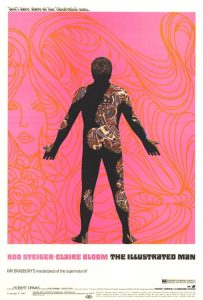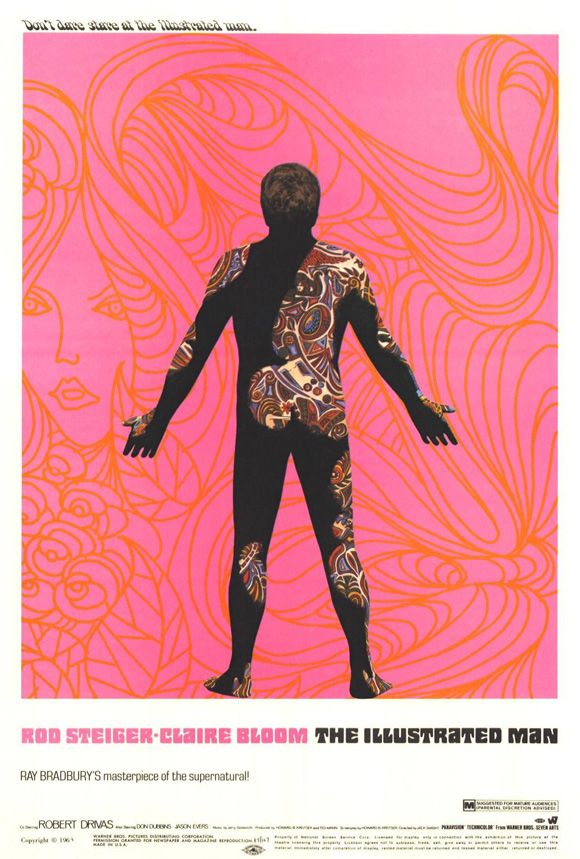
‘The Illustrated Man’ shows how good a writer Ray Bradbury was, not to mention how his head was full of fascinating ideas. It shows this because the film is incredibly dated today, from the acting styles to the visions of the future we witness. And yet I remained engrossed throughout, because beneath the anachronisms and barmy notions lie the same powerful film that resonated with me as a child.
A lot of the film has little to do with the title character, although Rod Steiger’s menacing performance will never let you forget the man with all-over body tattoos that come to life if you stare too hard. Also, Steiger himself has multiple roles throughout, and he delivers them with a mix of the theatrical bellow and long-faced stoicism of the period, but they still have their impact. Meanwhile of greater interest are the short stories each tattoo reveals. Like Bradbury’s ‘The Martian Chronicles’, this film is a collection of tales woven around a central premise. We view his fears about where human society is heading, thanks to the all-pervading intrusion of technology into our lives.
I’m reminded of a Poe line – “without music or an intriguing idea, colour becomes pallor, man becomes carcass, home becomes catacomb, and the dead are but for a moment motionless”. What becomes of the human soul when the machines take over? Add the all-embracing pallor and single-chrome fashion of a typical 1960s vision of the future, and you have a very bleak picture indeed. Yet that’s how people saw things then (our guesses on things to come will look just as ridiculous soon enough), and the central theme, given how far we’ve progressed technologically in the interim, cannot be any less relevant. I’m glad our modern perspective yearns for more colour though – never mind technology killing our souls – the achromatic architecture would make anyone suicidal enough already.
Sojourns into futurity do of course suggest sci-fi trappings. Even putting aside the fact that predictions of the future quickly become dated, Ray Bradbury was never scientifically accurate at the time he wrote his stories. In ‘The Martian Chronicles’ for example, it is possible to breathe on Mars, water flows through canals, and a few blasts from a rocket’s engines can terraform the atmosphere. ‘The Illustrated Man’ takes the same liberties with reality. Yet to dismiss it because of nonsensical scientific premises is to miss the point. The settings are not more than fabulous window dressing – fantasy masquerading as sci-fi. It is the exploration of the human condition in each tale that Bradbury is concerned with, and they are timeless.
As such, while time has not been entirely kind to this screen adaption of ‘The Illustrated Man’, its emotional core remains intact. The Bradbury flair for the weird and the wonderful is untarnished, and his thoughts still clear. You just need to take a good long look at a rainbow afterwards.

